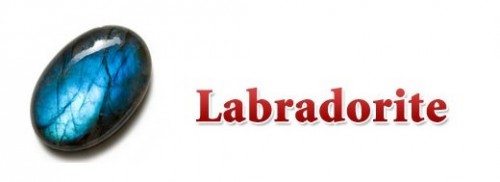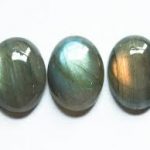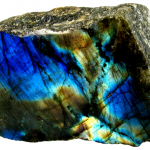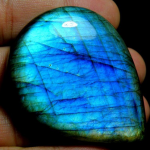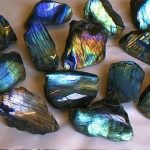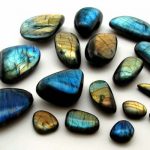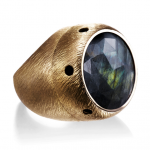Contents
Gemstone Information
Its name Labradorite comes from Labrador province, where it was first mined in Canada, over 200 years ago, it is a variety of the Feldspar mineral family, with a typical iridescence characteristic, known as “labradorescence”, caused by the light diffraction in the surface of the rock showing different colors when viewed from different angles.
This gemstones usually have a dark base color with metallic-looking color plays. Labradorescence optical effect present in Labradorite can display the full spectrum of colors, showing beautiful tonality of blue, green, yellow, orange, purple. The most valued Labradorite are the stones when all the rainbow color are present in labradorescence, in some case Labradorite can also show some attractive metallic glitter effect called aventurescence.
Spectrolite is a rare variety of Labradorite with blue iridescence effect, mined only in Finland.
Andesine is a recent product obtained from Labradorite that recently was introduced to the gemstone market; Andesine are formed by synthetically diffusing some kind of transparent Labradorite with copper, obtaining an orangish red stone with some silver blue flashes.
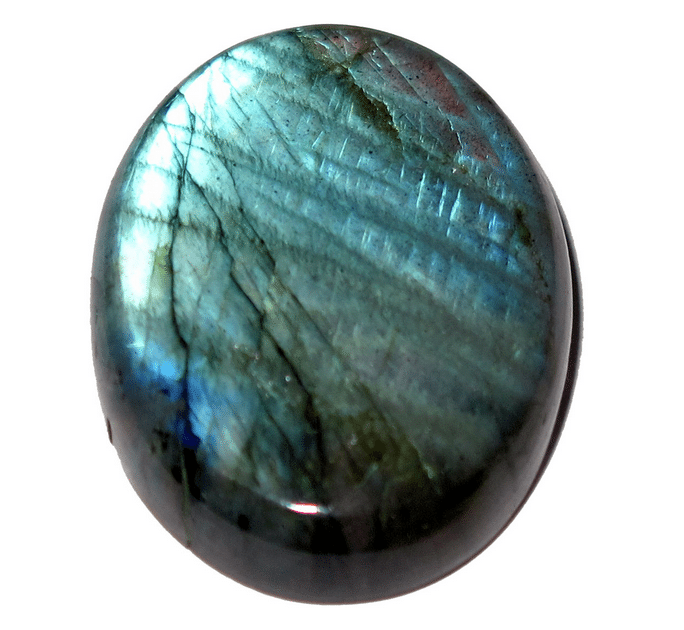
Click here to buy Labradorite loose gemstones
Labradorite Healing Properties
Associated with the throat chakra is considered a magical stone by Eskimo people, with powerful protective properties, capable to bring lights to the wearer, can infuse calm and serenity, gives positivity and peace, can also bring out psychic abilities because facilitate communication between the spiritual and physical world.
It can also help with digestion and regulate both metabolism and blood pressure, help with digestion disorder.
Treatment
Usually on the market can be found natural and not treated or enhanced material.
Andesine is the treated variety of Labradorite.
Origin and gemstone source
Main source of this material is Canada, but also Madagascar, Ukraine, Australia, United States, Mexico, Russia, Norway can produce huge amount of nice stones.
Finland is the only source of Spectrolite.
Images and Photos
Click here to buy Labradorite loose gemstones
Optical Effect
The typical optical effect of Labradorite is a kind of iridescent called labradorescence, it can display the full spectrum of colors, with attractive tonality of purple, blue, yellow, orange, green. More colors present in a labradorescence, more the stone is valued.
In some rare case it can also show some metallic schiller inclusions, this effect is called aventurescence and can also be displayed by some kind of Quartz called Aventurine.
Uses
Found in large size and huge quantity often comes with translucent or opaque clarity, usually cut into cabochon to maximize its labradorescence, sometimes can also faceted in popular cut like: oval, pear, emerald step cut and similar.
Low grade stones can also be cut into beads, rondelle, chips or carved into sculptures, sphere, pyramid, obelisk, wand and similar.
It is a very loved gemstone by apprentice jeweler, duo to its affordable cost and attractive appearance can be the perfect stone for a nice jewel with low cost of production.
Care and Cleaning
With an hardness of 6-6.5 on the Mohs hardness mineral scale Labradorite is considered a medium durable stone, softer than Quartz, can be easily scratched by other harder material.
We suggest to store your gemstone separately from other stones, and clean it only with soapy water a dry ut with a soft cloth, avoiding ultrasonic cleaner and steam machine for your jewel.
Scam and Fraud
Easily recognizable with its unique labradorescence effect, the stone present on the gem market are often natural, they are not treated in anyway and are considered a safe purchase.
Click here to buy Labradorite loose gemstones
Typical Internal Inclusions
Observing some gemstones at the microscope you can see ilmenite inclusions.
Gemological Info
- Mineral family: Feldspar (Plagioclase)
- Crystal: Triclinic
- Density: 2.70
- Hardness: 6 – 6.5
- Refractive index: 1.560 – 1.568
- Optic Character: Biaxial positive
- Color: Purple (variable intensity and saturation from pastel to deep purple)
- Optical effect: Labradorescence
- Luster: Vitreous to pearly
- Clarity: Transparent to Opaque
- Fluorescent: Yellow striation
- Fracture: Uneven to conchoidal
- Cleavage: Perfect
- Durability: Medium Good
Click here to buy Labradorite loose gemstones

